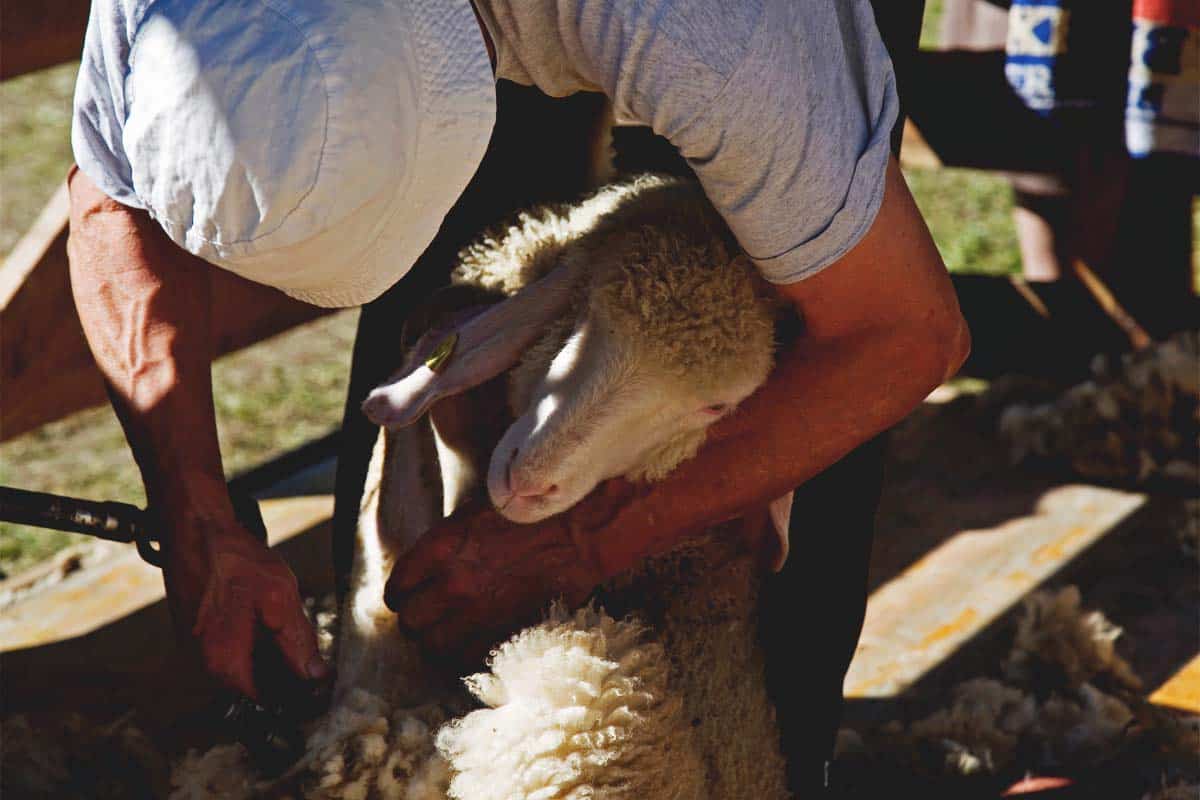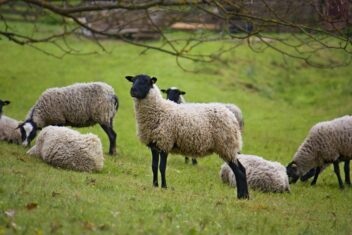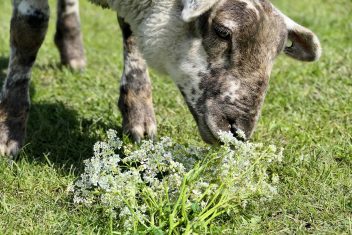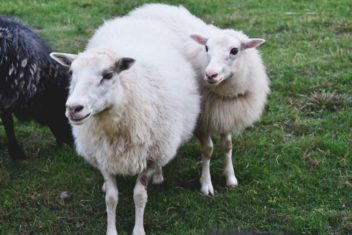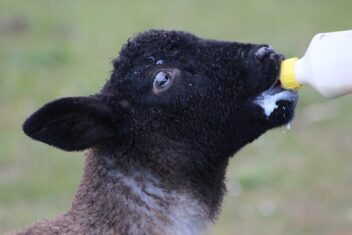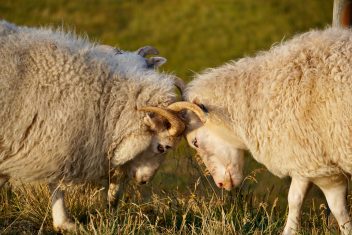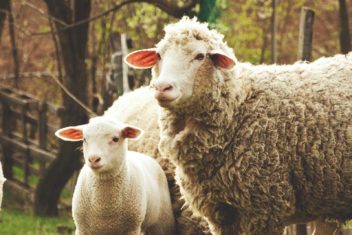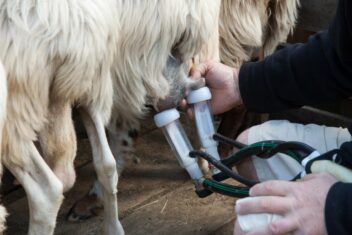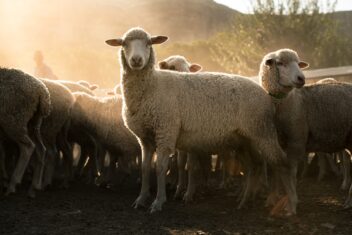Owning and raising sheep is a relatively simple endeavor. You feed them, house them, provide them with plenty of fresh, clean water.
It’s as simple as that.
Until that is, you need to trim hooves or administer medication and am faced with handling sheep for the first time.
Many people are terrified of handling their sheep, worrying that they will either hurt the sheep, hurt themselves, or cause some other kind of lasting damage.
The good news is that sheep are remarkably resilient, and once you know what you’re doing, you can handle sheep easily regardless of your body size or strength.
Here’s what you need to know.
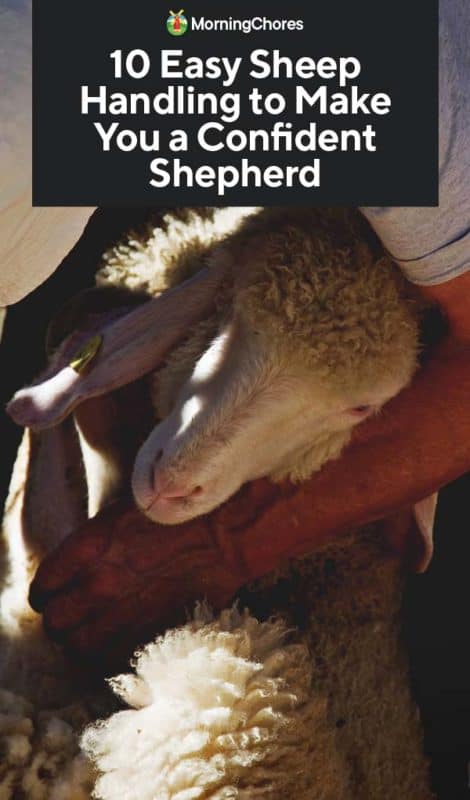
Why Correct Sheep Handling is Important
Knowing how to handle sheep properly is essential for any shepherd.
Not only will it reduce stress for you and the sheep, but it will also reduce the likelihood of injury.
Again, that goes for both you and for the sheep! It can also preserve the quality of the milk, meat, and wool, all of which are impacted by poor or inefficient handling.
10 Step-by-Step Tips For Handling Sheep With Ease
Step One: Consider the Purpose
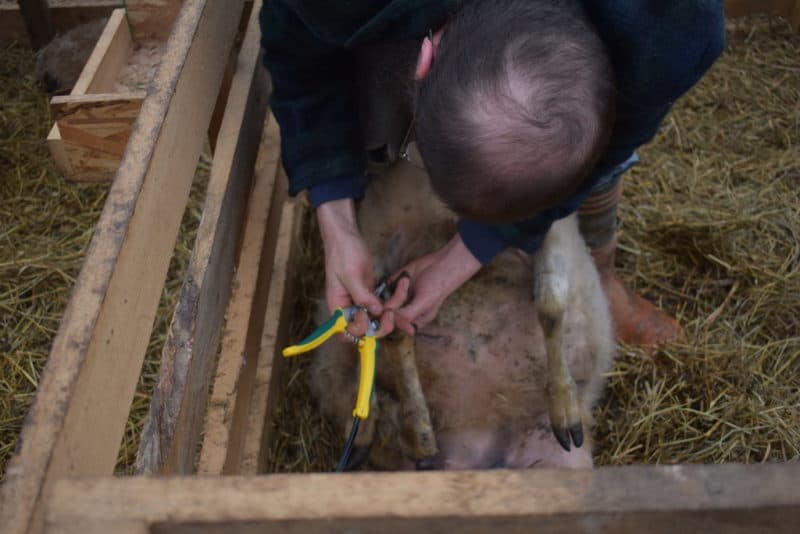
Before handling your sheep first consider what your purpose is and whether it is really necessary. You should never try to catch and handle sheep unnecessarily. If there’s not a specific action that needs to be taken, don’t mess with your sheep. Leave them be. Yes, even if they are your pets!
The technique you use to catch sheep will vary slightly depending on your reason for handling them. For example, if you need to administer an oral drench or check the eyes of your sheep for anemia, you can usually get away by just rubbing them and holding them upright.
However, if you need to trim hooves or know how to catch a sheep for shearing, you’ll need to flip or “rump” your sheep. The hold will be a bit more challenging, but it can certainly be done – and I’ll tell you how to do it in this article.
Step Two: Remain Calm
The most important thing you can do when handling any kind of livestock – but especially sheep – is to remain calm. Sheep feed on your anxiety and can tell when you’re nervous, even if you don’t think you are acting any differently.
Get used to being around your sheep. Sit with them for a few minutes each day. Let them get used to you. Give them treats occasionally. Get to know them and their quirks.
Whatever you do, don’t run to the pen screaming, clapping, yelling, or doing anything else that inspires fear. Make sure you move slowly and confidently as you enter the pen.
Step Three: Create a Holding Area
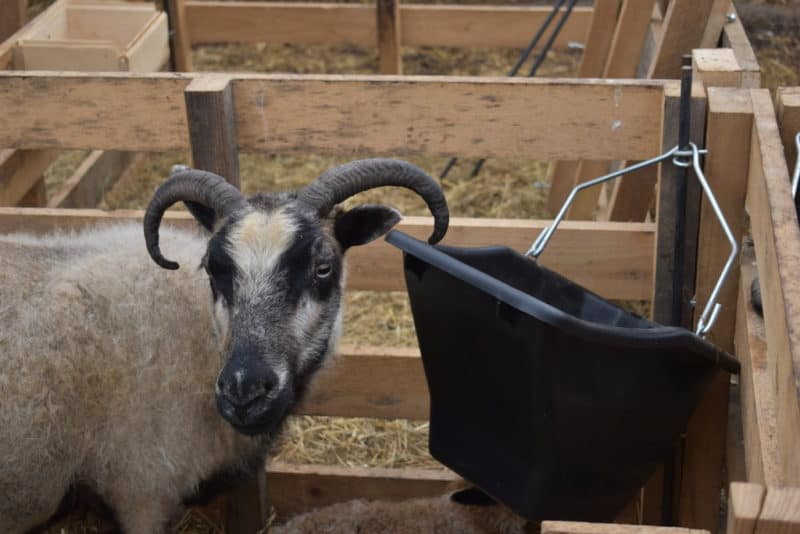
A good rule of thumb is to corral your sheep into as small a holding pen as possible. You’ll want something that allows you enough room to work, but not so big that it’s easy for your sheep to run away from you.
In the photo above, you’ll see a picture of one of our ewes in a lambing jug. We knew we needed to get the ewes up to date on their dewormers and hoof trimming, so we decided to keep them in these pens with their little ones for a few days after they lambed.
As you can see, it’s just large enough to give her a bit of room to move, but not so large that she can run away. You could create a larger holding area for multiple sheep by using things like livestock panels.
Step Four: Mind the Flight Zone
All animals have a unique “flight zone.” This refers to how close you can get before they start to move. For sheep that aren’t used to people, the flight zone is larger – they’re going to move as soon as you get near them.
Pay attention to your sheep’s individual patterns and determine their approximate flight zone. This will help you manage their speed by controlling how close you get to them. If you want them to stop running away from you, step out of the flight zone.
Step Five: Avoid Grabbing the Horns – Learn Proper Positioning Instead
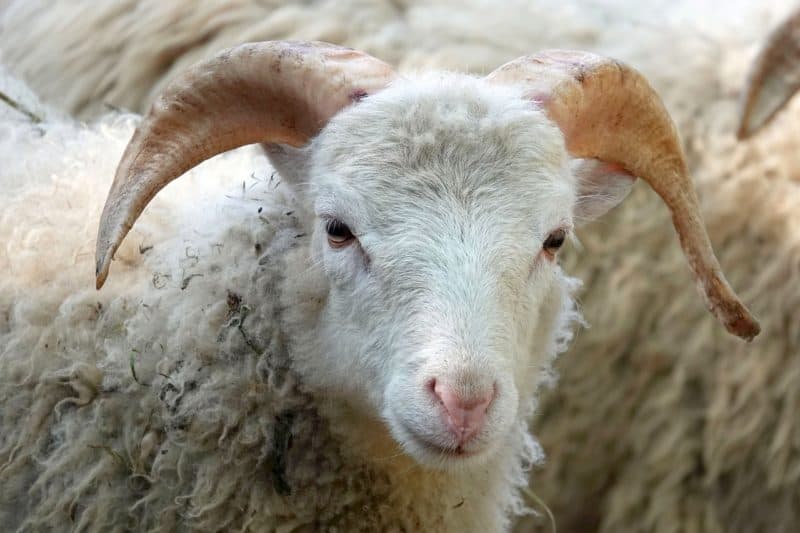
Some sheep have horns. While it seems as though that could be a convenient way to latch onto a sheep, it’s not always a great idea. You can not only break the horn off at its base, but you can remove the outer covering, too. You can also stab yourself on a sharp horn.
It’s okay to gently hold a horn as leverage, but don’t pull down hard or hold onto it any longer than you need to.
Instead, when you’re holding the sheep, cup just one hand under the jaw. You don’t need to squeeze, but instead, just apply a bit of pressure. They won’t push forward into your hand but will instead back into you. You can use your hand or body to block the back and shoulders.
Step Six: Brace Yourself
While you have one hand under the sheep’s chin and the other preventing it from escaping backward, you may want to brace yourself. Keep both hands on the sheep and press the sheep against a fence or wall. It will be positioned between your knee or leg and the wall.
Depending on your height and the height of your sheep, you might be able to straddle the sheep at this time. This isn’t a good method of catching sheep if you need to do any long chunks of work, like shearing or hoof trimming, but it can be effective if you just need to give an oral drench of dewormers or do a quick eye check.
Step Seven: Consider Using a Halter
If the method above doesn’t work for you – or if you need to keep your sheep in place for a longer period of time – you may need to use a halter.
If you can train a sheep to a halter, you will be able to walk with it so you can then tie it to a fence and hold it in standing position. Halter breaking takes some time and dedication, so it’s not something that you will want to try at the very last minute.
Step Eight: Flip and “Rump” When Necessary
If you need to work with your sheep for a longer period and holding it while it’s on all four feet just won’t work, you need to learn how to flip and “rump” the sheep.
This is a sheep handling method that takes some practice. You can see in the photos I’ve provided that it involves moving a sheep from a standing position to sitting on its “rump.” You will have to be firm, but gentle. Again – practice makes perfect.
You’ll start in the position I mentioned above. Keep your knee against a sheep’s hip and the chin in one hand. Put your other hand on the opposite hip. Use your first hand to turn the sheep’s head toward its rear.
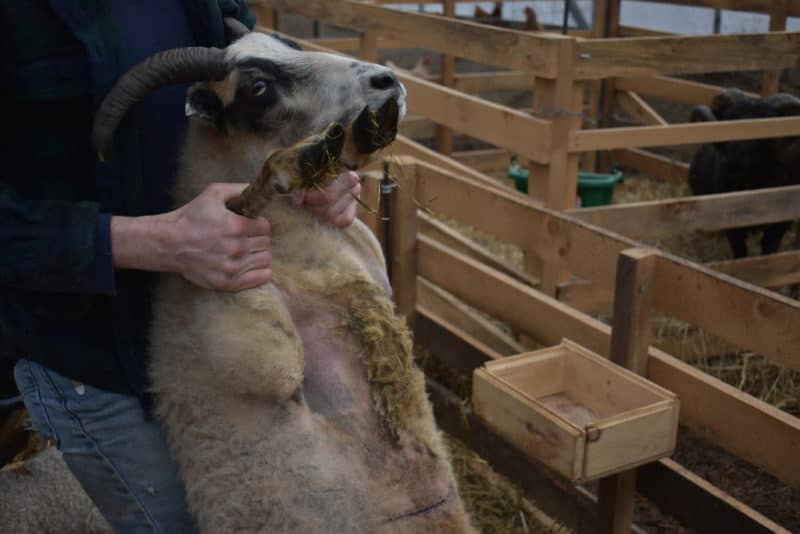
Interestingly, this reflexively makes most sheep want to sit down. As the sheep begins to sit, press your knee into the hip. It will lose its balance so that you can then guide it up and over toward the ground.
Be fit while you’re doing this, but gentle. Try not to pull on the wool, as it can leave bruises on the underlying skin. As you can see in the picture above, you should gently hold the sheep while you guide it onto its rump.
When you flip sheep like this, it may make sense to withhold food and water overnight. The weight of a ruminant can press against the diaphragm, which can cause the sheep to wheeze and fight you.
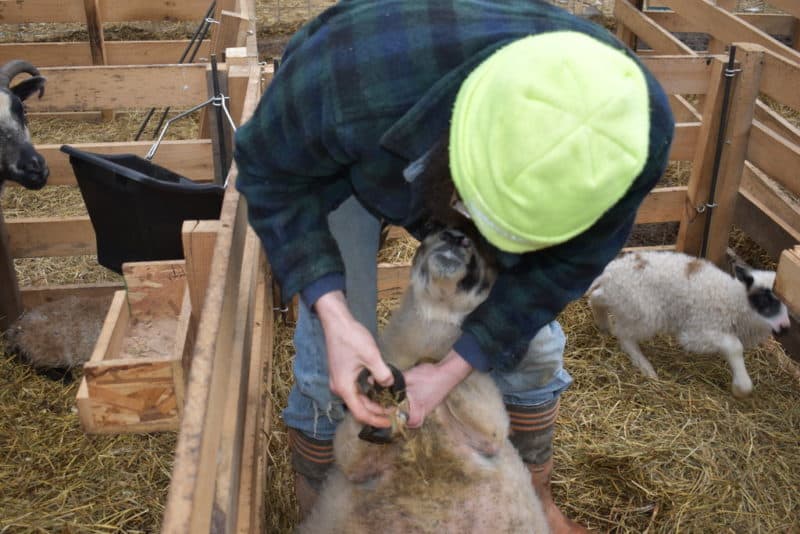
Step Nine: Wash Your Hands
Both before and after handling sheep, make sure you wash your hands. You’ll probably want to, anyway, since wool can be grimy and lanolin isn’t that enjoyable to have on your hands. However, it’s important to remember that sheep can carry all kinds of diseases that you, too, can catch.
Step Ten: Consider Investing in Sheep Handling Equipment and Systems
There are plenty of sheep handling equipment and systems you can invest in. You might want to consider a well-trained sheepdog, for instance, which works well if you need to know how to herd sheep. Other equipment, like gates and loading chutes, can make your life a little easier, too.
Plus, these systems can often make it safer for your sheep.
Handling Sheep When They’re Pregnant
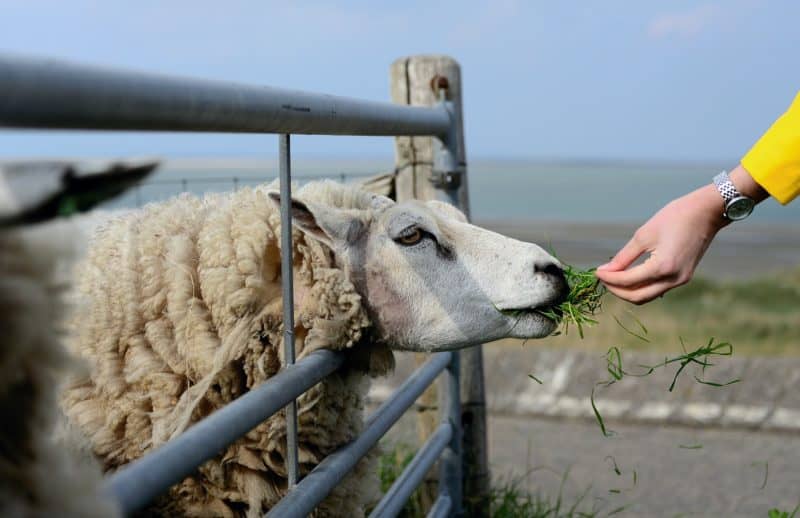
Generally, pregnant ewes can be handled just like non-pregnant sheep can. However, I always exercise caution when handling sheep with known pregnancies.
I don’t like to handle sheep unnecessarily, so I usually wait to do any maintenance, like hoof trimming, until after the sheep have lambed or before they are gestating.
If you need to handle pregnant sheep, the general recommendation is to avoid flipping and rumping them and instead hold them up against a wall to check eyes, administer shots, or do other methods of care.
The #1 Tip For Handling Sheep: Interact With Them Regularly
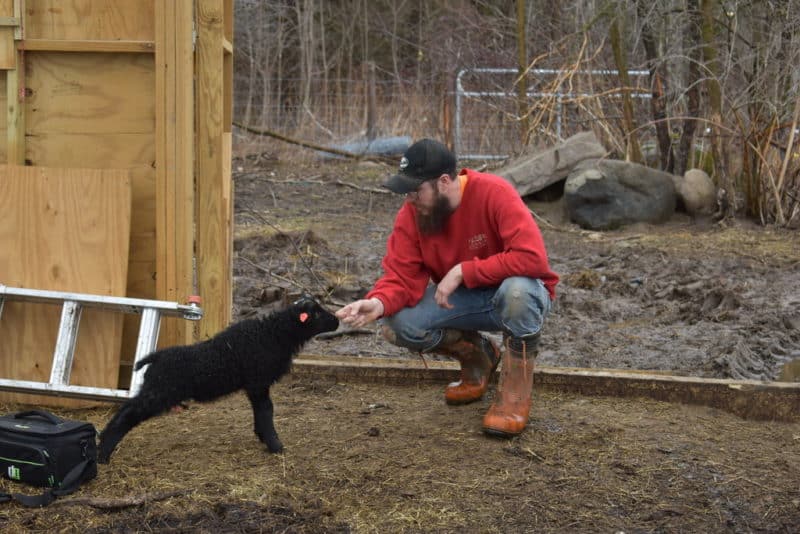
The most important thing you can do when handling your sheep is to understand them and interact with them on a regular basis.
Not only will they be more familiar and comfortable with you, but you’ll be more confident in yourself and aware of their unique behaviors, too. Something else to keep in mind is that sheep “flightiness” and disposition varies significantly by breed. While some sheep, like Dorsets, are reliably easy to handle, other breeds, like Icelandics, are notoriously difficult to catch and manage.
Get to know your flock, and with a little bit of practice, you’ll be calling yourself the “sheep whisperer” in no time!
